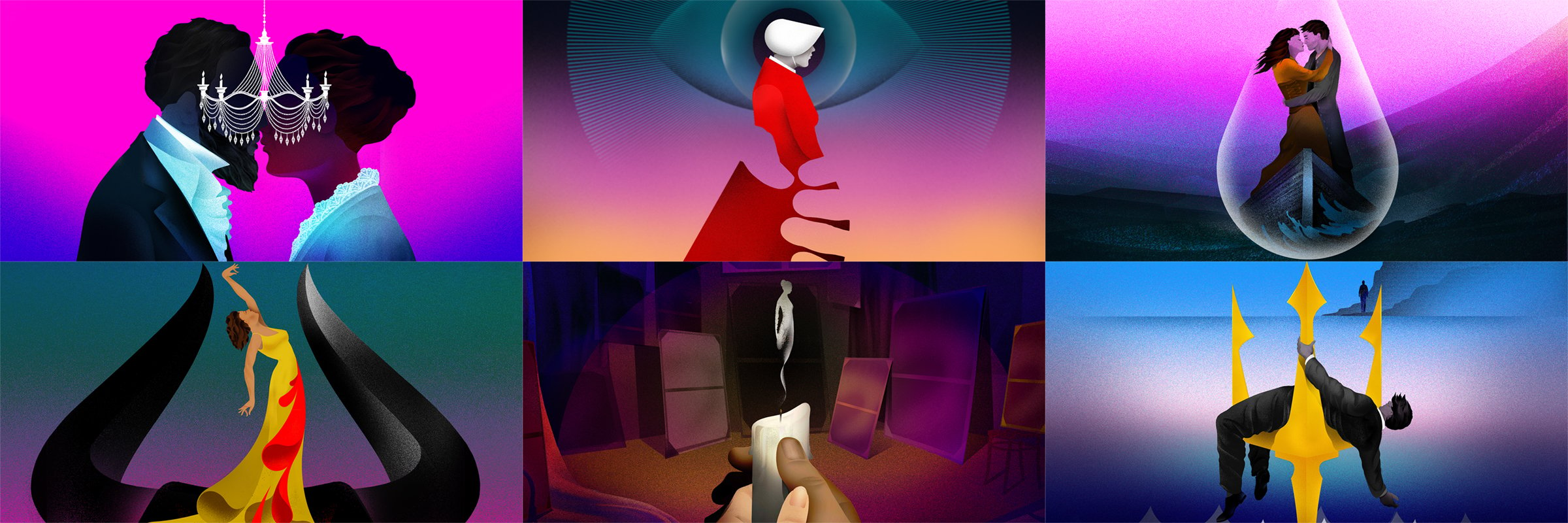Backstage with Matthew: Unveiling a new season
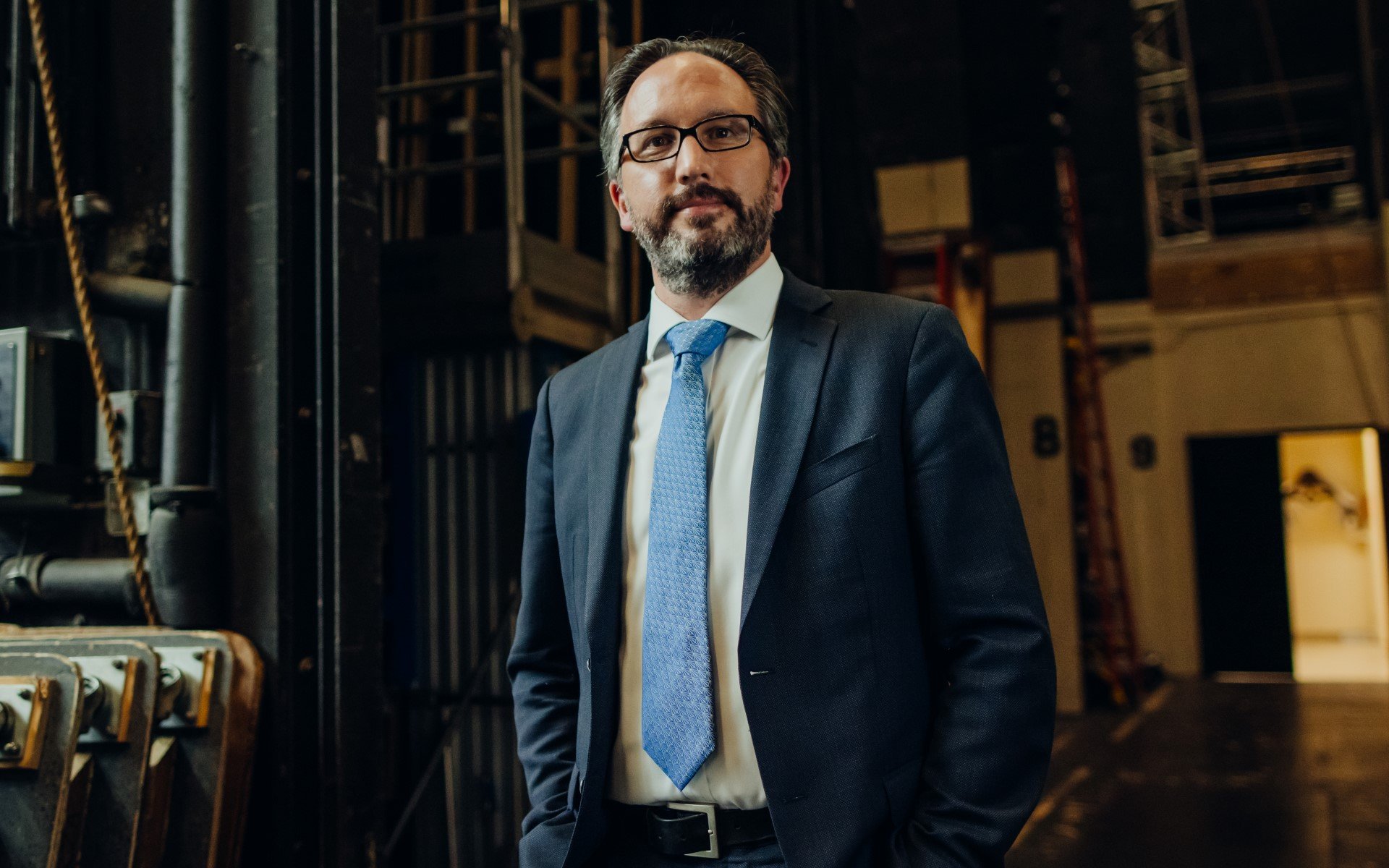
Rather than repeating that here, I thought I’d share some behind the scenes thoughts about how we program seasons, and some personal reflections on a few of the works. Interspersed are production photos from the new season and our new images from illustrator Brian Stauffer. I love how he captures both the story and the emotion of each work.
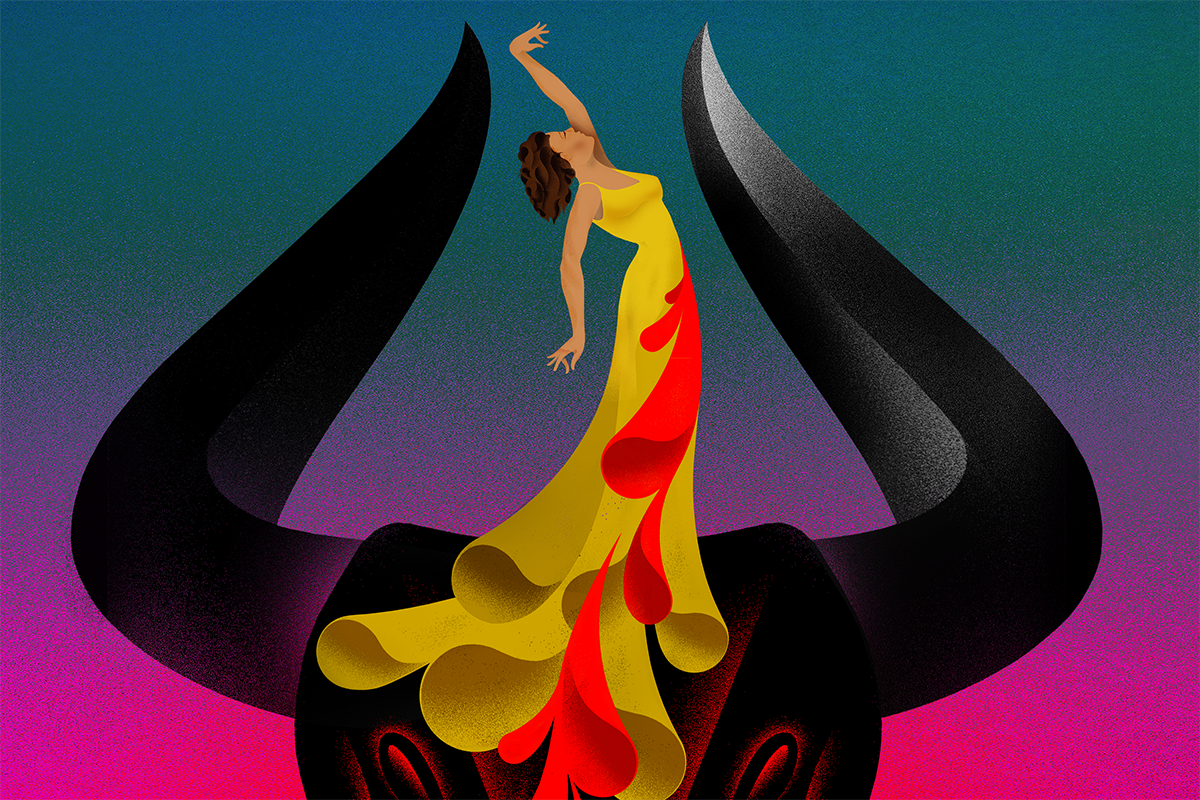
Carmen
In all our operas, we strive for transformative experiences that will leave you enraptured, pulled in, changed and we strive to bring you that whether it’s a world premiere or a revival.
But how do we determine which experiences to combine? It really comes down to balance along a number of dimensions: a balance of periods from the baroque to the contemporary; a blend of languages and aesthetics; a blend of well-known and more obscure titles; a blend of returning and debuting artists; and a blend of new-to-stage productions and revivals. That last point is important, not just from a cost perspective (revivals of shows amortize the initial investment), but also from a logistical standpoint. Revival shows are known entities, oftentimes built by our own company, and programming them helps free up time for new-to-stage productions that will often come with unexpected surprises!
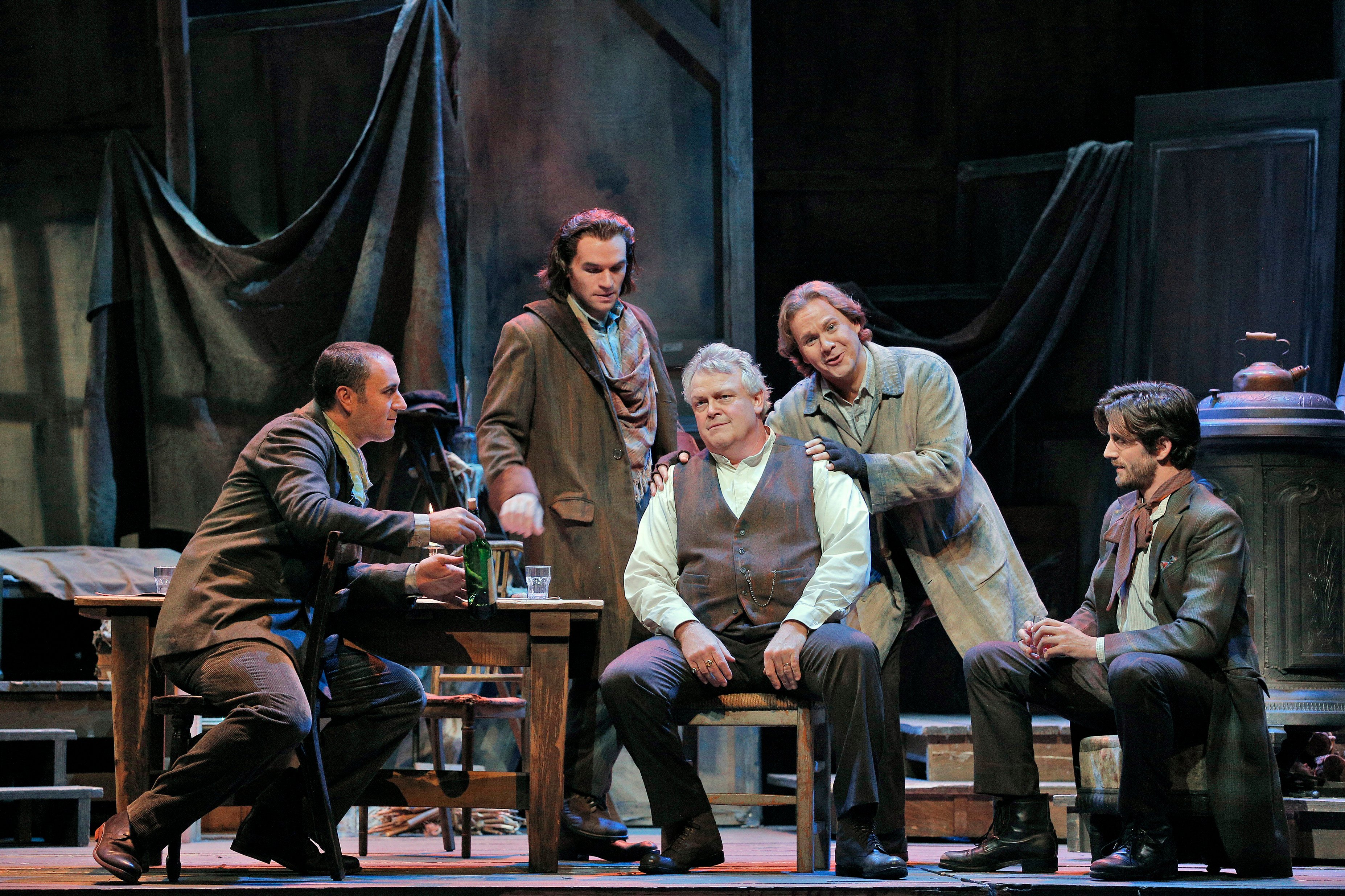 La Bohème, Photo: @cory_weaver_photographer
La Bohème, Photo: @cory_weaver_photographer
Over time we have seen a gradual diminution in the number of operas we’re able to present, largely from a cost perspective. In the nineteen years I’ve been here, we’ve gradually moved from 11 operas to 6 The fewer the productions, the more each one has to count along a plethora of dimensions, and the more a choice to do something rules out other options. If we have two new operas, can we have a Britten opera as well? Does a Wagner opera preclude a Strauss? Not necessarily, but you have to choose judiciously!
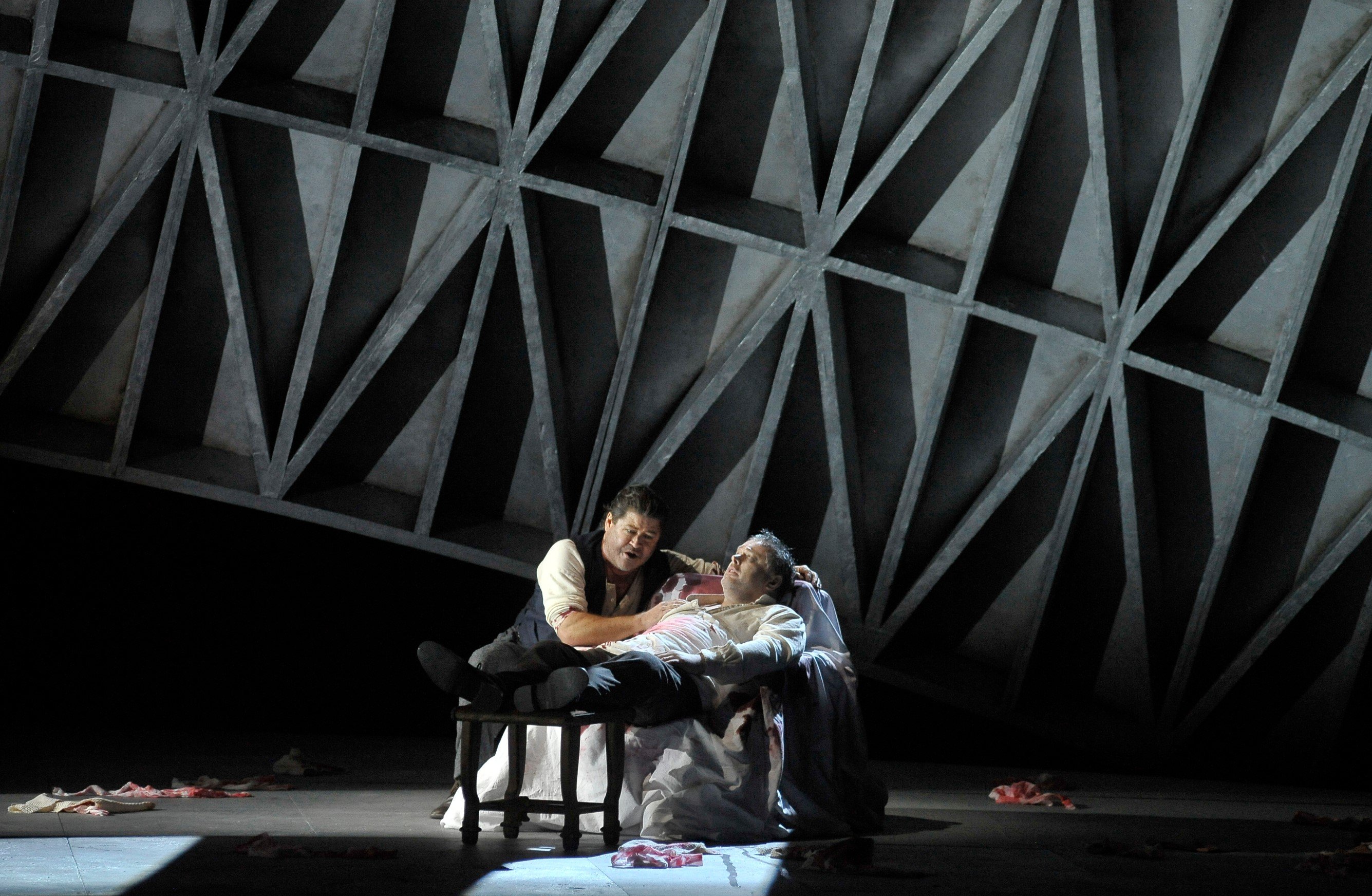 Tristan and Isolde, Photo: Michele Crosera
Tristan and Isolde, Photo: Michele Crosera
An important dimension to note is that our seasons can be looked at two ways. Officially, our season runs September to December, and then May/June, and we work to balance within that framework. But, in actuality, we all experience the opera year as an arc from May – December, with a slight pause in the summer. It’s important that we think along that dimension as well. I am very excited, for example, that we have Innocence and The Handmaid’s Tale just three months apart, even though they are technically in two separate seasons. And our pre-announcement of Huang Ruo and David Henry Hwang’s The Monkey King in fall 2025 begins to hint at how the calendar 2025 might begin to unfold.
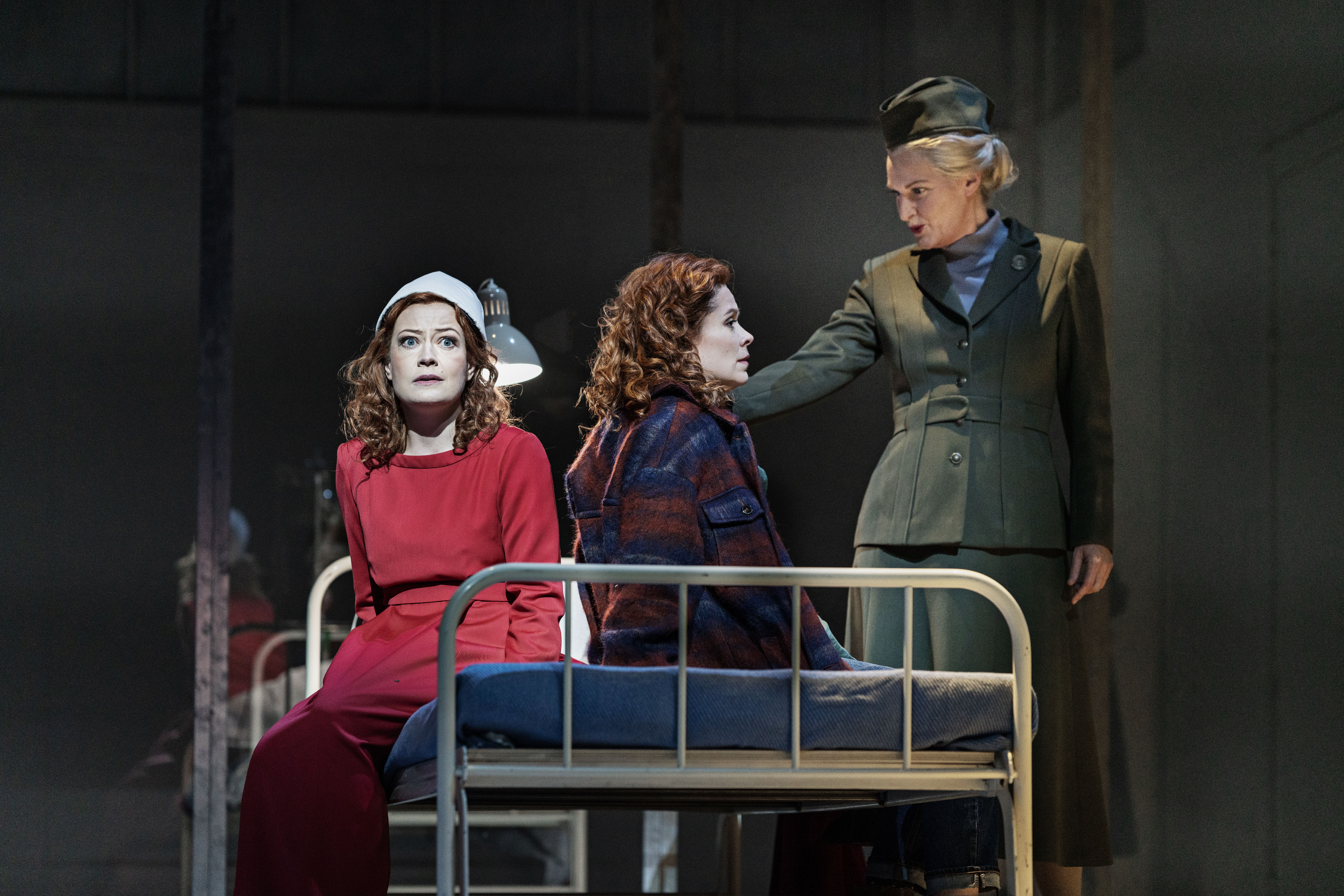 The Handmaid's Tale
The Handmaid's Tale
As I think about our 2024-25 season, I think of it in three dimensions:
First, we have the continuation of Eun Sun Kim’s Verdi and Wagner journeys with Un Ballo in Maschera and Tristan and Isolde. There’s something very special about multi-year journeys through the repertoire. We begin to find patterns, we experience the deepening of stylistic fluency within the company, and we become part of an arc of repertoire across time. This pairing in 2024 will be particularly meaningful because both works come from the same time (and almost place). Ballo was premiered in the same year that Tristan was written. Two vastly different works, and written just a few hundred miles apart (Wagner wrote act II of Tristan in exile in Venice). Under the musical leadership of Eun Sun, both will be illuminated in new ways, and I am so excited for that.
 Un Ballo in Maschera
Un Ballo in Maschera
Second, we have two more unusual works that speak to who we are today, but through vastly different lenses. The west coast premiere of The Handmaid’s Tale will be a major moment in American opera, as we bring Poul Ruders’ towering masterpiece to life in a new production with The Royal Danish Opera. Margaret Atwood’s novel is scarily prescient at the moment, and the operatic version takes us deep into the story’s emotive core. While The Handmaid’s Tale illuminates society through a very resonant story, Mozart’s Idomeneo does so through the vehicle of archetype. A phenomenal example of opera seria, or serious opera, Idomeneo takes us into the world of mythology with characters who represent archetypal aspects of humanity. We are all different blends of archetypes, and so we each resonate differently with a work like Idomeneo, but profoundly so.
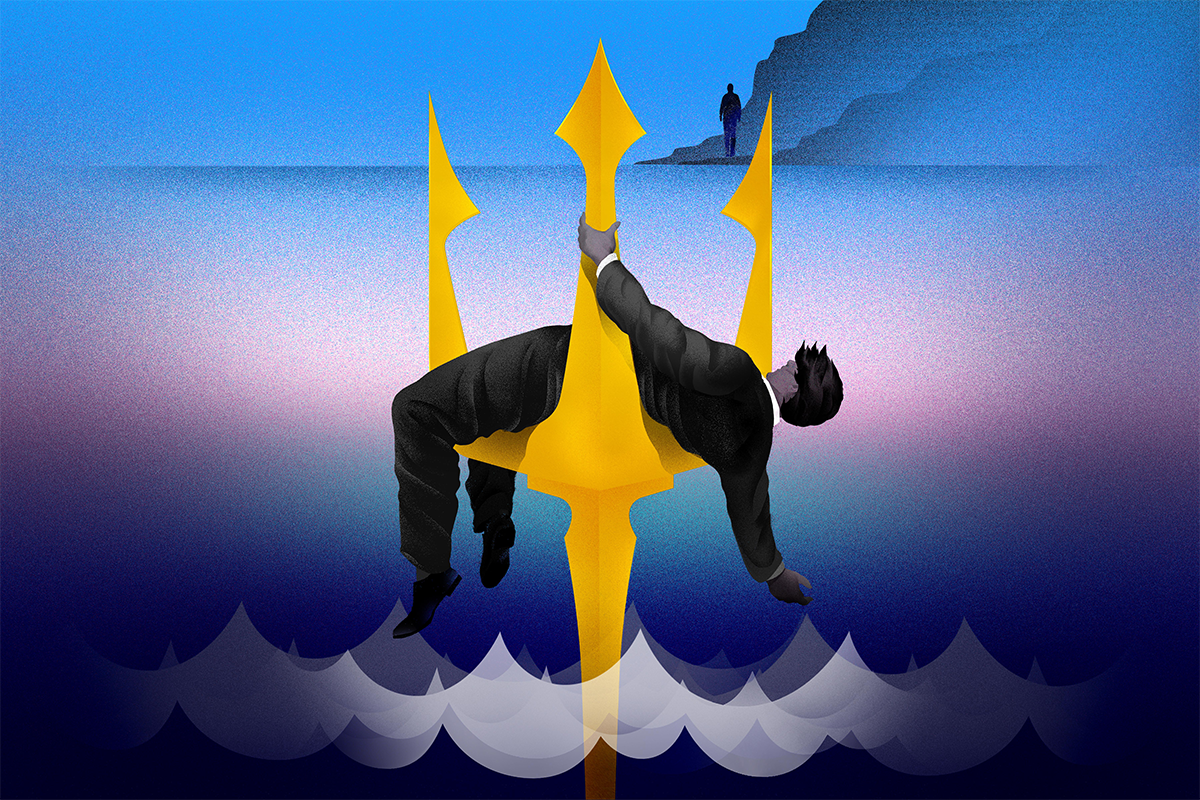
Idomeneo
And then, two operas that should both appeal to newcomers because of their iconic status, and delight decades-long subscribers because of their casts: Carmen and La Bohème. It’s imperative that we have casts the rival of anywhere in the world, and between Carmen and the US debuts of Eve-Maud Hubeaux and Louise Alder, and the return of Jonathan Tetelman and Christian van Horn, and then La Bohème and two spectacular casts including Pene Pati and Brittany Renee (our Julie in Omar), these titles will move you whether you’re seeing them for the first time or the twentieth.
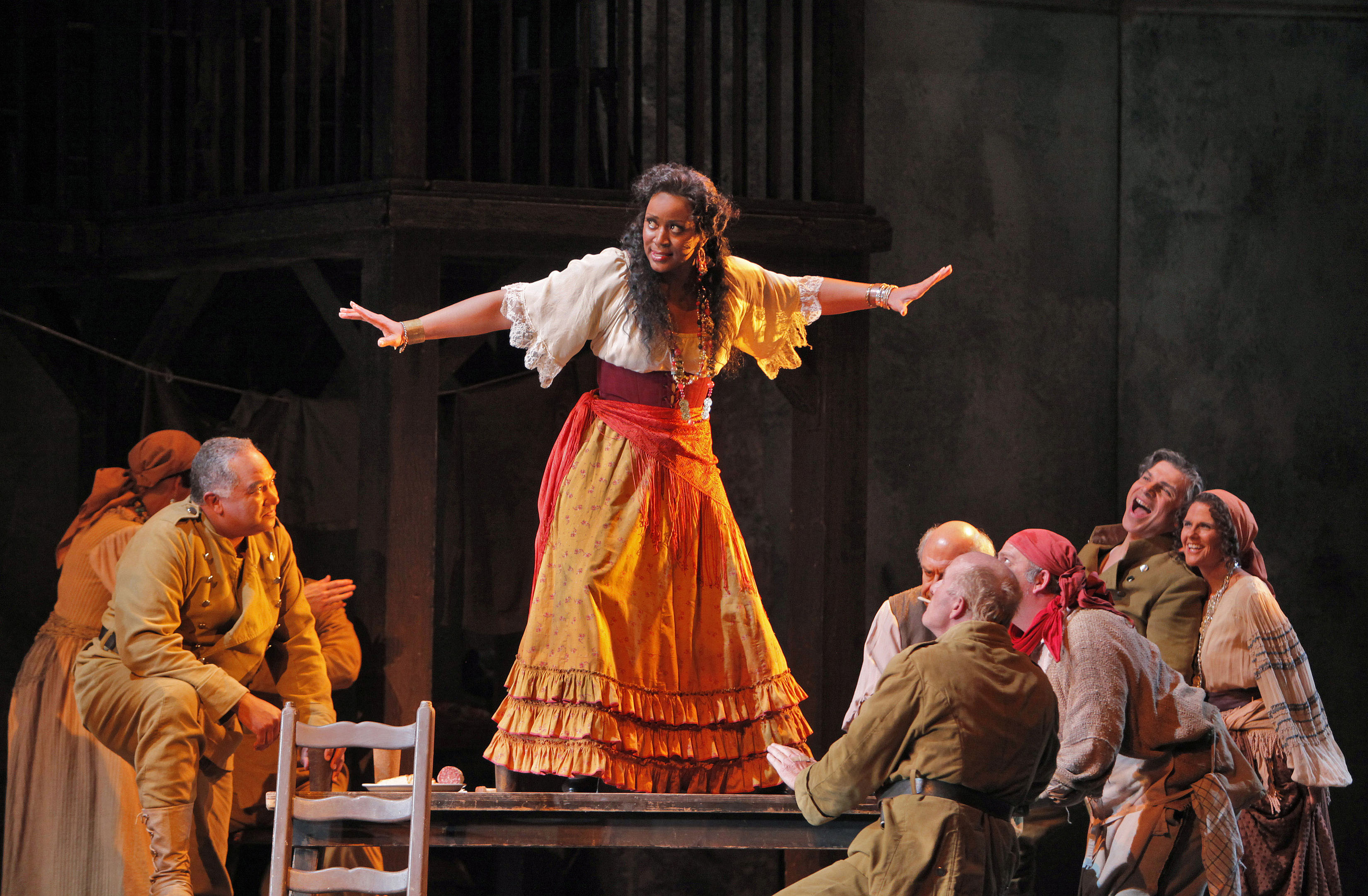 Carmen, Photo: @cory_weaver_photographer
Carmen, Photo: @cory_weaver_photographer
I wanted to share a few more personal reflections on what we have coming up next season.
First, although The Handmaid’s Tale was written in 2000, it is as contemporarily relevant as anything one could imagine. It has been a great pleasure to get to know the composer, Poul Ruders, as we’ve been on this journey to bring the piece to life in this new production. You can see an interesting interview with Poul and Margaret Atwood from Boston a few years ago here. While the piece was written in Danish, Poul quickly realized that it would have much more immediacy (even for a Danish audience) in English. He has a powerful sensibility for the audience, and a deep humility for the role a piece like this can play in a broader societal discourse. I met Poul for the first time at a dinner at Santa Fe Opera in 2018. We had already committed to a new production, but I’d never met him. I sat down at dinner next to a wonderfully convivial gentleman, and with great serendipity discovered it was Poul. I am so looking forward to welcoming him to San Francisco, particularly in this important celebratory 75th birthday year!

The Handmaid's Tale
In producing Idomeneo it was so important to find a production that spoke to the contemporary resonance of the work. Because opera seria are rooted in a more archetypal sense of myth, they are sometimes produced in more ancient settings (our last Idomeneo in 2009 blended antiquity with classicism). That can give a beautiful synergy between music and visual, but it can also be a barrier to bringing the work closer to us in the here and now. I love what Australian director Lindy Hume has done, keeping the sense of myth and ritual but fusing it with stunning images of nature with projections taking us into crashing seas, lush forests and craggy coastlines. You can get a sense of the production in this trailer from Opera Australia. I’ve often thought about Idomeneo being about the individual vs. society: how can a king decide between his nation and his son? But in Lindy’s production, I’ve also come to see Idomeneo as a dilemma of humans vs. nature. And, as we see all too often, we take on nature at our own peril. It promises to be a stunning moment in the theater.
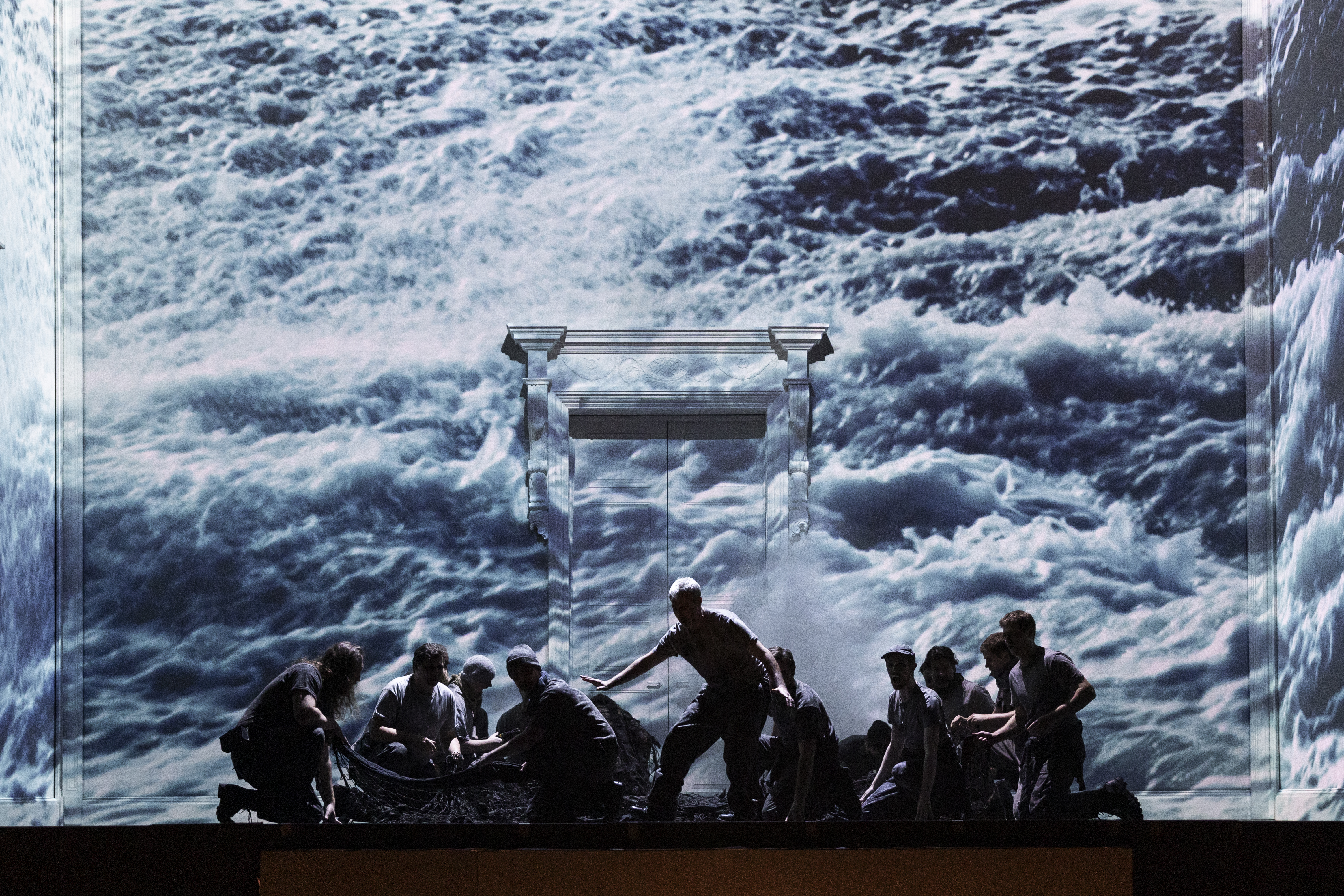 Idomeneo, Photo: Charlie Kinross
Idomeneo, Photo: Charlie Kinross
I could go on about each of our productions, but want to end with a few thoughts about Tristan and Isolde. It is one of those pinnacle moments for any opera company, a moment that showcases artistry at the highest levels of impact. Wagner literally bends time with this work, taking us into a reality unlike anything created before or since. It’s as though the entirety of humanity is distilled into a moment of emotion so intense that we feel the boundaries of time and space changing. The greatest presentations of Tristan are those that invite the audience to take that cosmic journey and, between the exquisite artistry Eun Sun will bring, and the spacious elegance of Paul Curran’s production, I am excited to invite audiences to take that space-time journey this October. There’s nothing else like it in human creation.
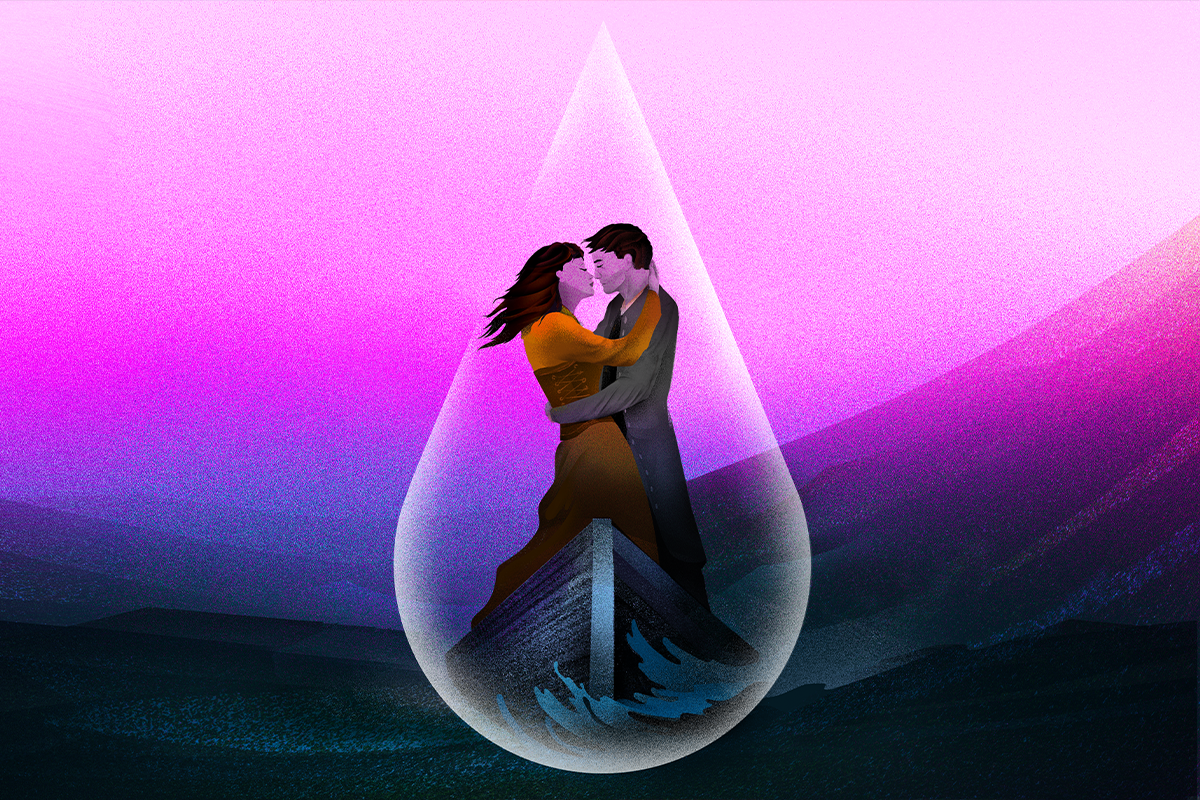
Tristan and Isolde
I realize I’m a little biased, but I believe that the 2024-25 season is going to be a season of quite extraordinary experiences. And that is what we hope for: that every night in the opera house is extraordinary. We sit in a dark space, experiencing profound emotions next to complete strangers. That in and of itself is extraordinary, and something I cherish every single time I’m in a theater.
I hope that you’ll join us this summer and on into the 2024-25 season. Your attendance, your generosity, your belief in the importance of this, makes seasons like this possible, and I cannot wait to share in it with you. Please go to sfopera.com to explore more and secure your place in something extraordinary. Thank you!
